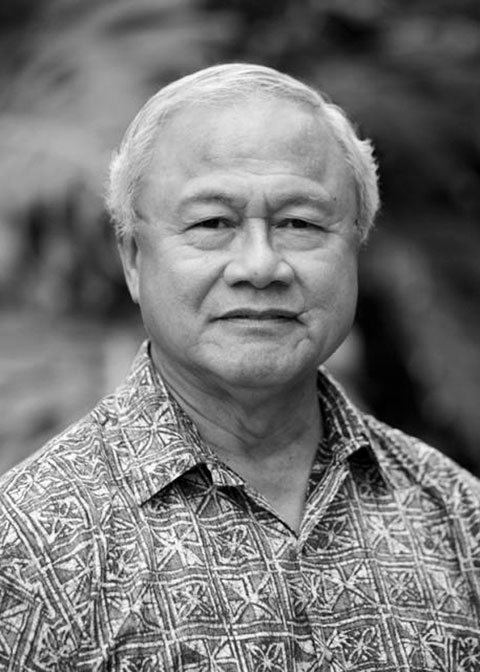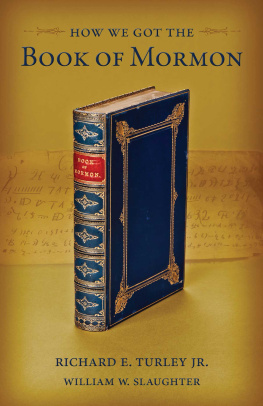2012 Joseph A. Cannon and Cheri Loveless.
All rights reserved. No part of this book may bereproduced in any form or by any means without permission in writing from thepublisher, Ensign Peak. The views expressed herein arethe responsibility of the author and do not necessarily represent the positionof Ensign Peak.
Library of Congress Cataloging-in-Publication Data
Why Im a Mormon / edited by Joseph A. Cannon.
pages cm
Includes bibliographical references.
Summary: Essays by prominent members of The Church of Jesus Christ of Latter-day Saints, explaining why they are members of the church.
ISBN 978-1-60908-739-5 (hardbound : alk. paper)
1. MormonsBiography. 2. MormonsDoctrines. 3. The Church of Jesus Christ of Latter-day SaintsBiography. 4. The Church of Jesus Christ of Latter-day SaintsDoctrines.
5. The Church of Jesus Christ of Latter-day SaintsMembership. I. Cannon, Joseph A., editor.
BX8693.W49 2012
289.3092'2dc23
[B] 2011041188
Printed in the United States of America
Worzalla Publishing Co., Stevens Point, WI
10 9 8 7 6 5 4 3 2 1
Preface
In the summer of 1964 my father took two of my brothers and me to the Worlds Fair in New York City. (That we got there by riding our bicycles from Los Angeles is another story.) Through an interesting and, to my mind, providential, chain of events, The Church of Jesus Christ of Latter-day Saints managed to obtain one of the prime spots for its spectacular pavilion.
The Churchs participation in the Worlds Fair was thought by many to symbolize an important new step in the growth of the restored Church, its entrance onto an international stage. Even to a young teenager it felt like the beginning of a great transformation in peoples perception of the Church, not only by the world, but by members of the Church itself. There was a growing consciousness that we were indeed becoming the international Church called to our imagination by President David O. McKay.
And yet it would not have been possible to have written a book of this scope and diversity about Latter-day Saints in 1964. It is not that there werent interesting and notable Mormons then; there just werent as many of them, and they were mostly concentrated in the Mountain West. It is true that George Romney was then the governor of Michigan. Elder Ezra Taft Benson had served as President Dwight D. Eisenhowers secretary of agriculture from 1953 to 1961. Elder Richard L. Evans, who had a hand in the Churchs participation in the Worlds Fair, was famous as the voice of Music and the Spoken Word and would later become the president of the International Rotary Clubs. And, of course, our beloved prophet, David O. McKay, was listed as one of the top five religious leaders in America in a poll by George Gallup in 1968.
Still, while membership in the Church doubled during President McKays tenure, in 1964 there were just two and a quarter million Latter-day Saints. A large percentage of them lived within a one-day journey by car from Salt Lake City, Utah. Fewer than two percent of Latter-day Saints lived in Latin America.
Fast forward. Just a few years ago my daughter, Abby, was called to serve in the England London Mission. Shortly after she arrived, we received an e-mail mentioning her wonderful first companion, a young woman from Stockholm, Sweden. In her next e-mail we were treated to a photograph of the companions. Abbys companion was a tall, beautiful African woman who indeed had been born in Stockholm of Nigerian immigrants. As time went on, Abby also had companions from Italy, by way of Australia, Armenia, Romaniaoh, and Kansas. Nearly every aspect of this paragraph was unimaginable by Latter-day Saints in 1964.
The stories in this book reflect the tectonic change in the Church since that great coming-out party at the 1964 Worlds Fair. There are some familiar names in the book, though, hopefully, less familiar stories. There are other less familiar names whose stories take us around the world to places one would have had to have been farsighted indeed to have imagined in 1964. But there are also stories in this book of members who were alive at the time of the Worlds Fair who moved forward into the world deeply and broadly into professions and activities at a level of success that also would have been difficult to conceive of nearly five decades ago.
As noted, it would have been difficult to have written this book fifty years ago. Today it was difficult enough to write, but for the opposite reason. There are already too many entries. Space constraints prevented the inclusion in this volume of numerous equally compelling stories. Fifty years hence, observers will look back with great astonishment at the growth and development of the Church, and there wont be room in multiple volumes to capture the individual contributions and diversity of members of the Church in that day.
With the humble recognition that all of us fall short of the glory of God, nevertheless, we are not ashamed of the gospel of Jesus Christ. We feel that we can embrace the test, By their fruits ye shall know them (Matthew 7:20).
Joseph A. Cannon
Mataumu Toelupe Alisa
Mataumu Toelupe Alisa is an artist who has mastered many media. But he is best known for his large murals in private collections and public buildings across Hawaii, including the Hawaii Judiciary Building and the Hawaii State Convention Center.

Born in 1942 in a fale or thatched-roof hut on the island of Upolu, Western Samoa, Mataumu immigrated to Hawaii at age eighteen and enrolled at the Church College of Hawaii (now BYUHawaii). He had such a passion for art that he would regularly sneak into the art room after hours and paint all night. Consequently he slept through enough classes to earn academic dismissal. Frustrated, he found his place at the Honolulu Academy of Arts, where he studied before and after his mission to Samoa (19671969).
His life and his art were significantly influenced by David Asherman and Juliette May Fraser, artists with whom he did several joint projects. He was inspired by the great murals of Mexicos Renaissance when the trio traveled to Mexico to create a ceramic tile mural.
In 1975, Mataumu completed his first large mural (ten by sixty feet) for Molokai High School. During this project he met Ann Zukin, an art student from California. They were married in 1976 and have reared five children.
In 1982, the BYUHawaii art department requested that Mataumu bring his studio to the Laie campus so students could experience a major work in progressa mural for the University of Hawaii at Manoa. Through this experience, he was inspired to return to school in 1984 to, as he puts it, help me to be a better artist and a better patriarch for my family. He received his BFA in 1987 and his MFA from BYU in Provo, Utah, in 1990. By 1997, he was teaching at the university that had once dismissed him. He retired in 2011.

A quiet man with a happy nature, he is always serving. His disarming sense of humor comes in handy when he critiques student work with quips like: Your trees look like theyre from Jurassic Park, or I think your painting needs a blessing.














